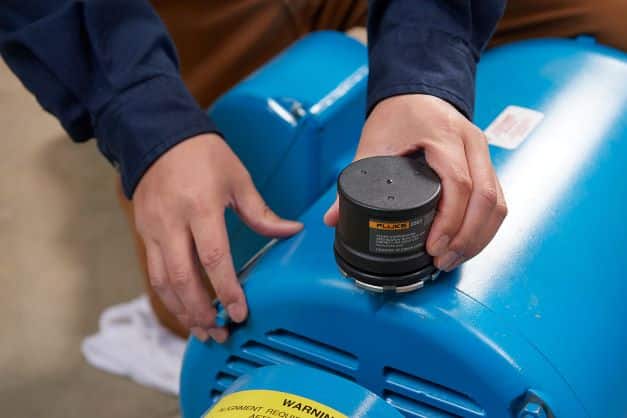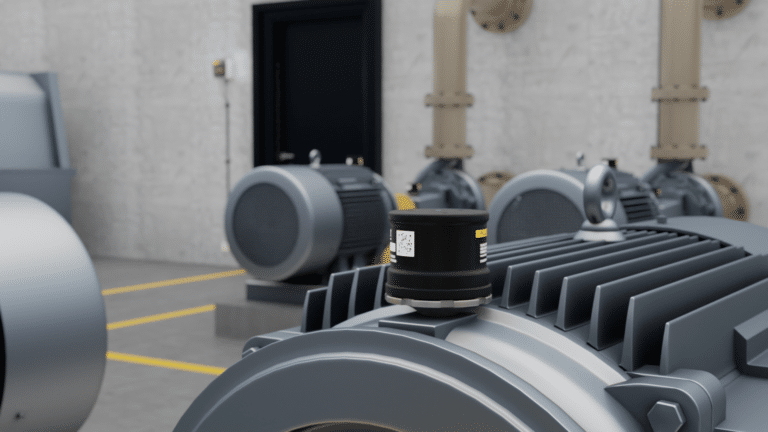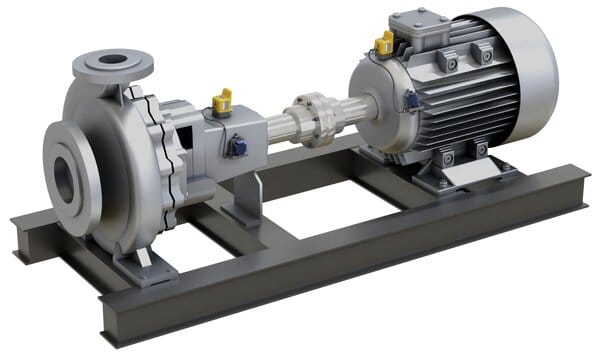Implementing vibration monitoring within your facility can be incredibly powerful; however, it’s important to understand several key considerations when leveraging vibration sensors to avoid high costs and overwhelming amounts of data. The following are five important considerations to keep in mind when implementing vibration monitoring as part of your maintenance strategy.
5 Considerations When Implementing Vibration Monitoring

1. You don’t need vibration sensors for every asset.
Vibration sensors are a powerful tool for monitoring and preventing downtime on your critical assets. Vibration monitoring can provide round-the-clock asset condition data and alerts when and where you need them most. However, not every asset in a plant needs constant condition monitoring. Vibration monitoring also generates a large volume of data, and it can be counterproductive to gather that all that data for all assets. In addition, mounting a vibration sensor on every machine is not an effective use of money or time.
For most facilities, leveraging a combination of handheld vibration monitoring tools and machine-mounted vibration sensors — where they each make the most sense — is a cost-effective way to capture machine health and performance data.
2. Use vibration sensors and handheld tools strategically.
For some assets, a handheld vibration monitoring tool and route-based inspections may be sufficient. If a change or abnormality is detected with a handheld tool, further inspection and action can be planned. Handheld vibration measurement tools can also be used effectively in conjunction with vibration sensors intended for screening. A screening sensor is designed to indicate whether a machine is in good shape or bad shape. It can trigger an alarm when an asset is experiencing a potential issue, at which point a technician can take a portable tool to the asset to capture more data.
3. Understand when to use wired vs. wireless vibration sensors.
A well-rounded vibration monitoring system can include both types of sensors. The key is to identify the appropriate type of sensor for each asset that will have a sensor. There are numerous variables to consider, including the criticality of the asset and how accessible it is.
Wired vibration sensors can measure and send vibration data continuously, while wireless vibration sensors do so at regular intervals. This interval can vary depending on the sensor’s attributes and the asset’s criticality and needs, but it can be as often as once a minute.
Wired vibration sensors cost more than wireless sensors, in part because the installation process requires additional materials and planning. Installation for wired sensors can be three times more expensive than for wireless sensors because someone has to run the conduit and the cables. However, the cost of wired sensors can be justified for some assets and situations.
Wired sensors can collect more extensive and detailed data than their wireless counterparts. Machines with a lot of changes related to process, temperature, condition, and structure necessarily produce a lot of data. With a wired sensor, you can transmit as much data as you want without needing to consider the sensor’s battery life or bandwidth.
Wireless vibration sensors are simpler and cheaper to install, making them ideal for use at scale. Their data transfer speeds can depend on factors such as connectivity and location. Wireless vibration sensors make sense when it’s feasible to monitor an asset by getting snapshots of data, limiting the battery and the bandwidth used. They are ideal for simple machines such as pumps, fans, compressors, and blowers.
Wireless sensors are well suited for hazardous and hard-to-reach places. These types of settings are common in many facilities today. Wireless sensors are also beneficial when you have limited labor resources.
4. Mount vibration sensors properly.
It’s important to use the right method of securing a sensor to a machine. In some instances, if you don’t want to permanently mount a sensor, it can be as simple as cleaning the area and mounting it with a magnet. For machines that are not magnetic, an adhesive mount is an option.
If you’re going to permanently mount a sensor on a machine, take steps such as scraping off some paint, using degreaser to remove any residue, and choosing industrial epoxy or a stud mount to permanently mount the sensor on the machine.
Where you mount a vibration sensor on a machine matters, too. Putting a sensor on an enclosure or cover can leave the sensor too far removed from the source of the vibration to be effective. Mount sensors on the solid metal of the bearing housing because that is the direct path of metal-to-metal contact from the rotating shaft. Vibration from the rotating shaft and the components on the shaft — including the pump and the motor—is transmitted through the bearings into the bearing housing.
5. Avoid being overwhelmed by data
Do you have a plan for what you will do with vibration data once you get it? It’s important to select the sensor that will give you the most useful data, not just the most data. If you and your team get bogged down with too much data, it becomes a nuisance instead of a helpful tool.
Having a plan for analyzing your vibration data — smart sensors, analysis software, a vibration analyst on staff, hiring expert consultants to provide analysis, or some combination of these — ensures that you’ll get the most out of whatever sensor setup you choose.
There are a few key pieces of information you should look to get from your vibration data. Namely, you should be able to answer, “What is the fault? How bad is the fault? And how should we act on the fault?” The ultimate goal is to have a vibration sensor that gives you the information you need to make a maintenance decision. Is the machine good or bad? Can you just let it run? Do you need to plan for parts? Is it time to take this machine down and do an overhaul before it fails?
Vibration data can also be trended over time, providing you with insights about your operations and making it possible to optimize your decisions.
When making vibration sensors part of your condition monitoring program, take the time to consider these dos and don’ts to be sure you are choosing the best options for your needs.
For help getting started with vibration sensors, speak with one of our expert sales representatives.






